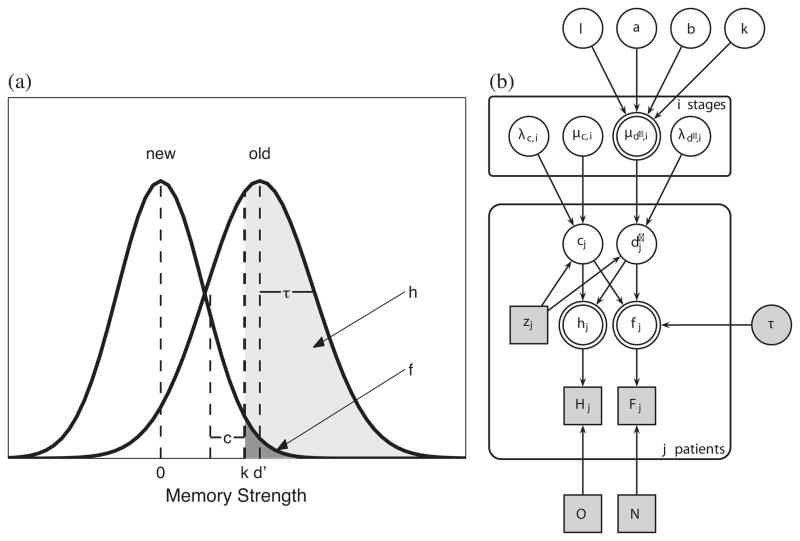Figure 1.
(a) Signal Detection Theory (SDT) Model.
The SDT model shows the memory strength distributions for old (studied) and new (unstudied) list words, along with parameters, k (subject’s response criterion), d′ (discriminability), c (response bias), h (hit rate), and f (false-alarm rate). See Methods for details.
(b) The Hierarchical Bayesian Cognitive Processing (HBCP) Model.
This HBCP model generates each patient’s observed response data (Hj, Fj) from their cognitive processes of discriminability and response bias. It also models the continuum of functional severity underlying the discrete FAST stages. See Methods for details.

